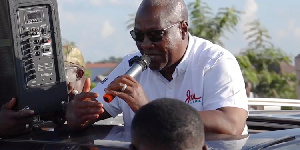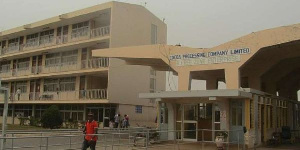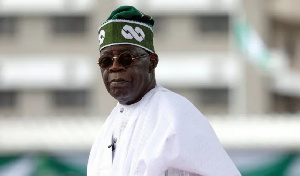Opinions of Saturday, 10 September 2016
Columnist: Doe, James W.
Sifting through the NPP debt debate
By Doe, James W.
Central government borrowing results in National debt as we all know. But all the debt debate in Ghana should be put in a global perspective.
In order for all to know the full story and see the true picture it is good to most importantly to confront debt with capital investment outlays; equipment, infrastructure, etc.
Otherwise politicians will be seen only as liars and not serious minded people.
1. So what are the trends in debts in say even in the OECD, in Q4, 2007 ($23 tr.) highest or Q4, 2008 ($24 tr.); economic collapse, and aftermath; Q4, 2009 ($28 tr.) onwards. Meanwhile interest rates had been about between 0.1% to 0.25% and raised in December, 2015 from between 0.25% to 0.50% for since almost over a decade in the USA.
2. Fast forward Q4, 2016 ($40 tr.) OECD debt was rising as we saw interest rates decline further. Since Q4, 2009 and sometimes below zero as in mostly Japan by Q4, 2016 was -2.0%. So if you are borrowing more from Japan for example it is best it is a borrowers market.
Therefore, after the financial crisis from Q4, 2009 to Q4, 2016 with the advanced countries adopting QE since 2009. QE is the institution abd gift to the world; including Japan by the Fed chair Ben Bernanke, never disputed by his successor Ms. Janet Yellen.
3. In a global economy where Ghana is not existing in isolation it will be silly not to BORROW when interest rates are 0.25%, 0.1% and below zero percent to even -2.0% in some cases.
4. What to watch for especially in Ghana is internally generated inflation and inflationary trends mostly due to appetite to consume foreign goods against a declining manufacturing sector. Not just imported California and Thailand rice, second hand clothing, salaries, wages, or consumption/consumerables overall but also huge spending burden on all the various services; telcos, electronic gadgets, especially mobile phones imports which we do not produce for instance.
5. Even for price of goods that we may produce like iron rods and cement during infrastructure and real estate boom could be inflationary.
6. The flip-side though will mean we will be seeing more infrastructure development, beautiful structures in our cities like business towers, new bank buildings and houses in our cities.
This is made possible because of the low interest rates so that if the debt or loan is locked in for the long term (Q4, 2014 to Q4, 2020) instead of emphasizing the volume (gross)/quantum of loan/debt and/or debt servicing as in the current situation the government is way better off.
7. Even petrol, until recently prices have been falling so the hope of becoming a richer country because of oil find for now is on hold.
8. Rather than analysing debt as a major pointer to a debate of this nature without providing for instance the trends in deficit; as a feature of expenditure overrunning revenue and how fast the gap is expanding will make any analysis of this nature totally unfounded. In OECD Q4/2007, Q4/2008, Q4/2009, ....... Q4/2016 is $7 tr., $17 tr., $43 tr. ....... $47 tr., respectively, a rising General Government Deficit. Arguably, Ghana can only be said to be bad off if such deficit is worst or widening faster than the above globally measured and comparable trend.
9. Interestingly, as stated by the presenter the deficits from 2012 (12.2% of GDP) and 2014 (11.9% of GDP) were on the decline but did not give the figure for 2015 and could have projected a further decline in 2016 from the data available to him. But did not for obvious reasons.
10. I therefore find the topic's wording to this end "concrete or straw" as rather none academic a performance, and wantonly mischievous.
11. This topic of debt of a nation is not complete without looking at the trends in debt to GDP ratio, as this is a factor that actually determines the debt sustainability of a country.
12. The peculiarity of the Ghana situation is power or electricity generation for domestic and industrial/manufacturing use have been abysmal at best. And all governments are to be blamed for it.
13. There was a powerpoint that purport to show off government recklessness. of two similar buildings example that cost Ghc150,000 in 2007 and Ghc 900,000 in 2011 to elucidate a point of impropriety by ruling government is not a good way a reputable academician should go. Since public projects follow strict project management procedure and procurement regulation that involves parliamentary approval.
14. Lets go to the Dambai Training College Identical buildings presentation which cost the NPP government spent Ghc150,000 in 2007 the other cost Ghc 900,000 in 2011 NDC In a period of 4 long years and was in indigenous currency. So in comparing the Dambai and the Jubilee house analogy which government stands out better off?
This does not necessarily involve decision by cabinet.
15. A typical point of digression will be read into the Jubilee House saga. It is not good idea to just throw numbers around to bum buzzle your own countrymen just for the sake of doing so.
16. In 2006 budgeted for about $30 m later became $36.9 m but was completed at the cost of $135 m in 2008 under the same NPP government in a period of just 2 years, which was actually a cost to taxpayers in reserve/foreign currency.
17. In Ghana the low levels of power generation and supply over the decades demands greater investment than usual which most governments have shy away from. Which can be done only by debt or heavy borrowing.
18. Investment is, in turn, a major source of economic growth. The debt to GDP in 2014 for Japan, USA, UK, France and Belgium is 247%, 123%, 113%, 119% and 129% evidently even if 100% is permissible level of debt, all these countries have crossed the make of indebtedness.
From 2008 to 2016 total public debt for every OECD country (15) has been on the rise (IMF) and not on the decline. So the question is how different is Ghana if global trends depicts the same phenomenon.
In conclusion therefore, the question is, if that sort of corrective investment is taking place? Has "dumsor" been improving, how about massive infrastructure, schools, hospitals, improvements in water purification plants, etc? If yes, then the answer to the topic is clear that the country's foundation is on concrete.











